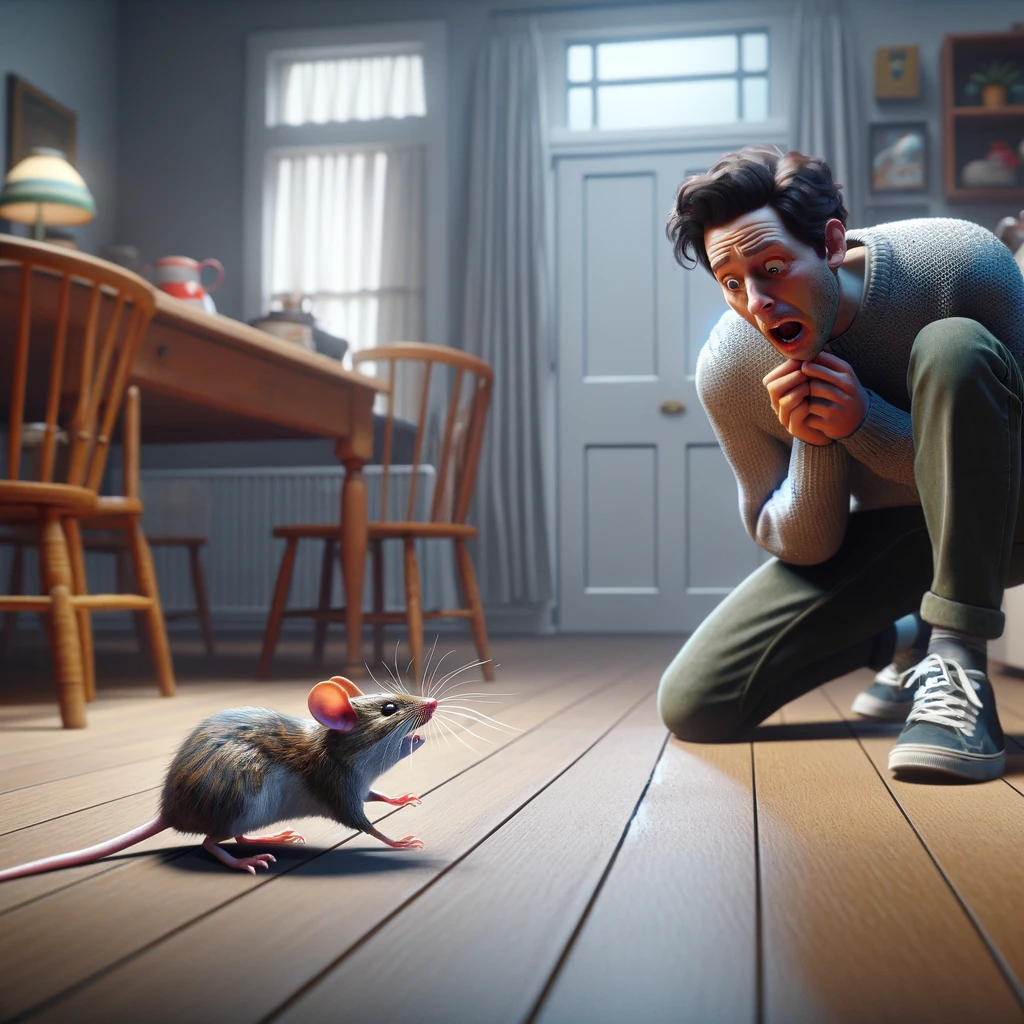
Musophobia, also known as the fear of mice and rats, is a common phobia that affects countless individuals around the world. This irrational fear can cause significant distress and interfere with daily life. In order to understand this phobia better and find effective solutions, it is important to delve into its causes and explore various strategies for overcoming it.
Fear of mice and rats may seem peculiar to some, but it has deep-rooted origins in human history. By examining the evolutionary roots of musophobia, we can gain insights into why it exists and how it has persisted through generations.
One possible explanation for musophobia lies in our ancestors' survival instincts. Mice and rats, as carriers of disease, posed a significant threat to human health in the past. The fear of these tiny creatures may have been a vital defense mechanism to ensure our ancestors' safety and survival. Although the risk of diseases from rodents has significantly diminished in modern times, the fear remains deeply ingrained within some individuals.
Furthermore, the association between rodents and negative outcomes in various cultural narratives has played a significant role in shaping musophobia. From ancient fables warning of the cunning nature of rats to modern horror movies portraying them as harbingers of doom, cultural depictions have perpetuated the fear of mice and rats. These stories often highlight the stealth and adaptability of rodents, emphasizing their ability to thrive in diverse environments, which can intensify the fear response in individuals.
One possible explanation for musophobia lies in our ancestors' survival instincts. Mice and rats, as carriers of disease, posed a significant threat to human health in the past. The fear of these tiny creatures may have been a vital defense mechanism to ensure our ancestors' safety and survival. Although the risk of diseases from rodents has significantly diminished in modern times, the fear remains deeply ingrained within some individuals.
In addition to evolutionary factors, cultural influences can contribute to the development of musophobia. Folklore, literature, and even media portrayals often depict mice and rats as carriers of danger and filth. These persistent cultural associations can reinforce and amplify the fear, making it more difficult to overcome.
Identifying the signs of musophobia is crucial for both individuals experiencing the fear and those seeking to help them. By understanding the common symptoms associated with musophobia, we can begin to address and conquer this fear.
Mouse phobia, also known as musophobia, is a specific phobia characterized by an irrational and persistent fear of mice or rats. This fear can be overwhelming and debilitating for those who suffer from it, impacting their daily lives and causing significant distress.
Individuals with musophobia may experience a range of symptoms that can manifest physically and psychologically. Physical symptoms can include a rapid heartbeat, shortness of breath, excessive sweating, and even panic attacks. Psychologically, people may feel intense anxiety, dread, or a strong desire to escape when confronted with mice or rats.
It is important to note that these symptoms can vary in intensity and may worsen over time if left untreated. Seeking help from a mental health professional is crucial for managing musophobia and improving quality of life.
The physical and psychological responses to mice and rats can vary from person to person. Some individuals may feel a mild discomfort or disgust, while others may experience extreme terror and avoidance. These reactions can be influenced by personal experiences, the severity of the phobia, and other individual factors.
Understanding these reactions is key to developing effective coping strategies and treatment plans for musophobia. Cognitive-behavioral therapy, exposure therapy, and relaxation techniques are commonly used approaches to help individuals overcome their fear of mice and rats.

Fortunately, there are several strategies and interventions that can help individuals overcome their fear of mice and rats. These techniques range from self-help practices to seeking professional assistance.
Understanding the root cause of musophobia can be a crucial step in overcoming this fear. For some individuals, past traumatic experiences or learned behaviors may have contributed to the development of this phobia. By exploring the underlying factors triggering the fear of mice and rats, individuals can gain insight into their condition and work towards addressing it effectively.

Exposure therapy is a widely used treatment for phobias, including musophobia. This therapeutic approach involves gradually exposing individuals to their fear in a controlled and safe environment. By gradually increasing exposure, individuals can learn to tolerate and eventually overcome their fear of mice and rats.
Furthermore, incorporating virtual reality technology into exposure therapy can enhance the treatment process for musophobia. Virtual reality simulations can create realistic scenarios involving mice and rats, allowing individuals to confront their fear in a simulated yet immersive environment. This innovative approach can provide a safe yet impactful way for individuals to gradually desensitize themselves to their phobia.
Cognitive behavioral techniques, such as cognitive restructuring and relaxation techniques, can also be effective in reducing musophobia. By challenging negative thoughts and beliefs surrounding mice and rats, individuals can reframe their perception and develop healthier associations.
In addition to cognitive restructuring, mindfulness practices can also play a significant role in managing musophobia. Mindfulness techniques, such as deep breathing exercises and meditation, can help individuals cultivate a sense of calmness and presence when faced with their fear triggers. By practicing mindfulness regularly, individuals can increase their emotional resilience and cope more effectively with their musophobia.

In severe cases of musophobia, where the phobia significantly impairs an individual's daily functioning, seeking professional help is recommended. Mental health professionals, such as psychologists or therapists specializing in phobias, can provide tailored treatment plans and support individuals in overcoming their fear.
Moreover, group therapy sessions focusing on musophobia can offer individuals a supportive environment to share their experiences and progress towards overcoming their fear. Engaging with peers who are also navigating similar phobias can foster a sense of community and understanding, enhancing the overall treatment journey for individuals with musophobia.
In conclusion, musophobia is a fear that can cause significant distress and interfere with a person's quality of life. By understanding the origins of this phobia and recognizing its signs, individuals can take steps to overcome their fear. Strategies such as exposure therapy and cognitive-behavioral techniques offer hope for conquering musophobia and living a life free from the constraints of this irrational fear. Remember, seeking professional help when needed is always a viable option on the path to overcoming musophobia.